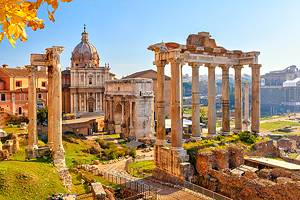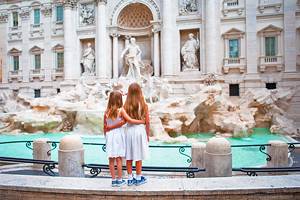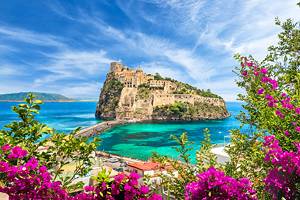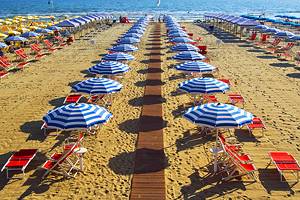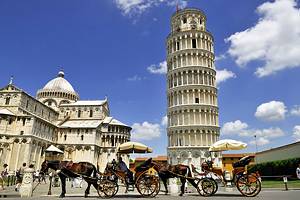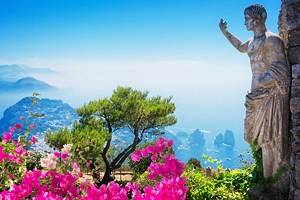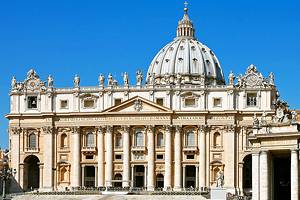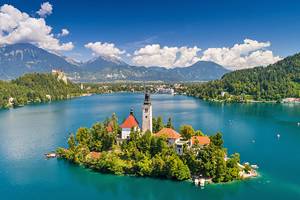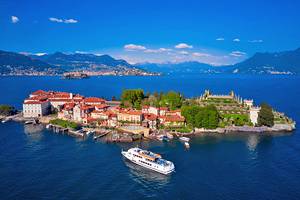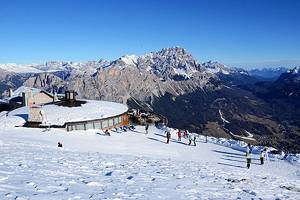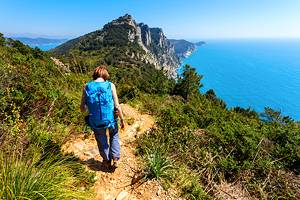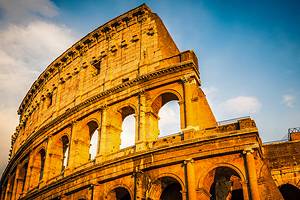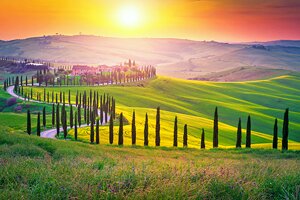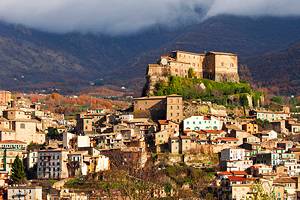Most Beautiful Gardens in Italy
With its variety of temperate and subtropical climates, its stunning landscapes, and opulent villas and palaces, Italy is one of Europe's foremost destinations for tourists interested in gardens. The landscaping and design of the great villa gardens has inspired garden designers for centuries, and today, the Italianate style is one of the definitive internationally recognized styles.
These gardens are not only interesting to horticultural enthusiasts but are among the top tourist attractions in Italy. This list is only the beginning-there are many more gardens of special note: the 30 acres at the 18th-century Villa Pisani near Venice are renowned for the world's most puzzling hedge maze, and in Padua is the world's oldest existing academic botanical garden and the original of all botanical gardens. But these are among the most beautiful anywhere in the world.
Discover the country's botanical wonders with our list of the most beautiful gardens in Italy.
Villa d'Este Gardens at Tivoli

The extensive series of gardens created by Renaissance Cardinal Ippolito d'Este to surround his villa stand at the pinnacle of Italian garden design and are, in fact, the model for formal gardens across the continent – and world. They seem to embody the very soul of the Italian Renaissance.
The layout – revolutionary for its day – created a set of "rooms" to highlight fountains, set against a backdrop of the surrounding Campagna hills, so that each seemed a garden unto itself. He arranged these along a central alley with intersecting walkways and allées leading to the major fountains. You'll need several hours to see all these and to appreciate the many pools, fountains, cascades, and playful water features, as well as the pavilions, statuary, grottos, and the views from all the terraces.
Above all, don't miss seeing the view from the Gran Loggia, walking behind the waterfall at the Fontana dell'Ovato – a water theater designed for performances – and listening to the water-powered organ in the elaborate Fontana dell'Organo.
Address: Piazza Trento, Tivoli
- Read More: Tourist Attractions in Tivoli
Villa Carlotta, Como
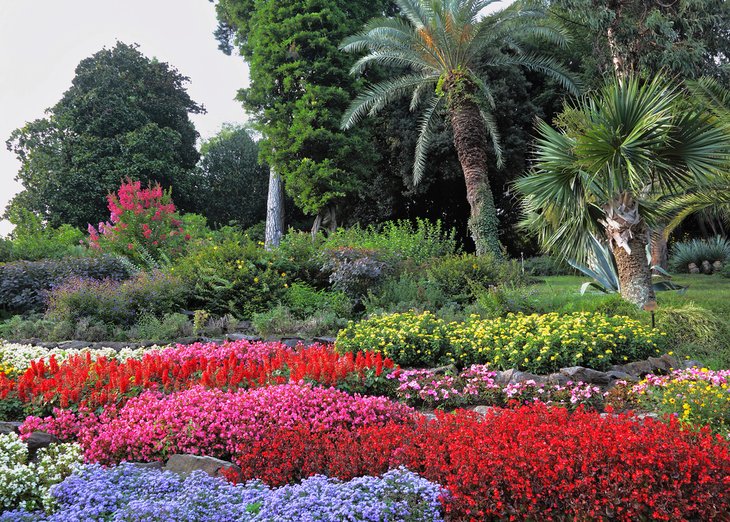
The western shore of Lake Como, on which rise the hillside gardens of Villa Carlotta, has such a mild year-round climate that it's called Tremezzina Riviera. Foliage here stays green all winter, even when the subalpine peaks that form a backdrop to the gardens are white with snow.
More colorful than most classic Italian gardens, which depend more on their intricate formal designs and manicured hedges, Villa Carlotta dazzles with masses of flowers that change with the seasons. The gardens follow the natural slopes and curves of the hillside, backed by woods that open to reveal magnificent lake and mountain views.
Visit in May to see the 400 camellias and 40-foot-tall banks of rhododendrons in full bloom or all summer long to see the 200 roses and the succession of brilliant annuals. The woodland gardens are a cool and pleasant break on a hot summer day.
Address: Via Regina 2, Tremezzo, Como
Official site: www.villacarlotta.it
Medici Villas near Florence
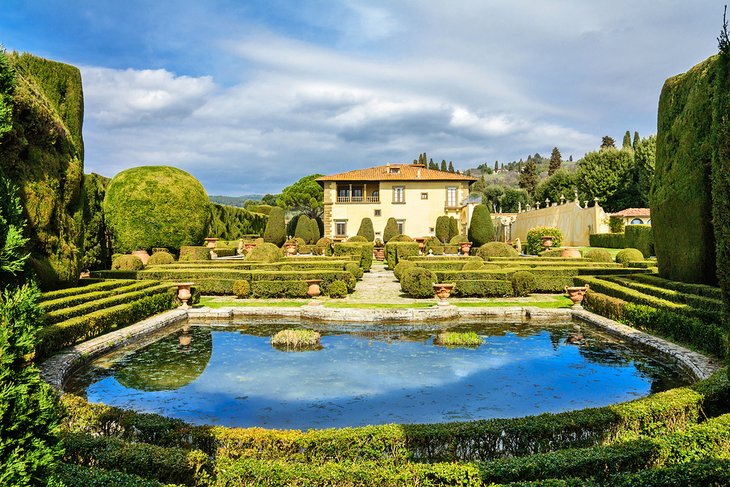
On the hillsides overlooking Florence, the Medici family built villas where they could retreat from the summer heat of their city palaces. They took advantage of the open space to surround these with opulent gardens designed in the height of Renaissance fashion.
Three of these gardens are open to tourists. Villa Gamberaia sits in a typical Renaissance garden of box hedges trimmed in geometric precision, formal parterres and terraces, fountains, and architectural features. A favorite subject for garden historians, the gardens were described by Edith Wharton in her book Italian Villas and Their Gardens as "Probably the most perfect example of the art of producing a great effect on a small scale..."
While there, stop at nearby Villa la Petraia, whose terraced gardens and allées of orange trees open to good views of Florence. A few hundred yards west of it is the Medici Villa di Castello, its air filled with jasmine and other fragrant plants. The elaborate grotto with mosaics and animal sculptures is thought to be the work of court architect Giorgio Vasari.
Address: Villa Gamberaia, Via del Rossellino 72, Settignano
Official site: https://www.villagamberaia.com/en/
Boboli Gardens, Florence
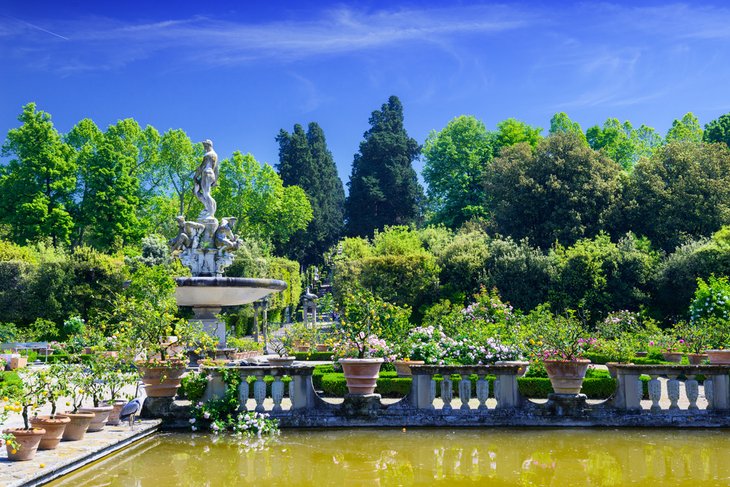
It took a century to complete the terraced gardens that cover 111 acres behind Florence's Palazzo Pitti. Always listed among Europe's best classical garden parks, the Boboli deftly combine landscape gardens and carefully manicured "nature" with the formal parterre, architectural follies, and water features common to Renaissance gardens. All this is tied together by promenades and more intimate paths that make strolling these gardens a welcome respite from the city.
From the top, at the terrace near the Kaffeehaus, you'll get a smashing view of Florence and Brunelleschi's great dome. Highlights to look for are the Fontana del Bacco-showing a court dwarf as Bacchus riding a tortoise; the ornate "cave" of Grotta del Buontalenti; the Rococo Kaffeehaus; the Neptune Fountain; and Abbondanza, the enormous statue of Plenty. An allée of tall cypresses flanked by chestnut, cork oaks, and pines leads down to an oval piazza with an island and Giambologna's Oceanus.
- Read More: Tourist Attractions in Florence
Villa Balbianello, Lenno
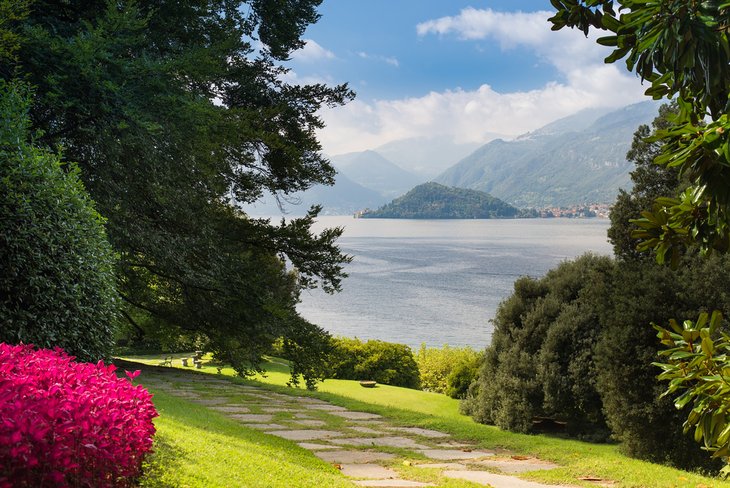
One of the loveliest sights from the boats that ply Lake Como is the garden-covered peninsula of Punta di Balbianello, rising steeply from the water. The terraced gardens and Baroque villa were built for a cardinal in the 1700s.
You can follow a trail there from the village of Lenno, but the best way to arrive is by the small boat from Lenno's dock. The boat circles the peninsula for views of the gardens from below before you land and climb to the villa at the top. Paths wind among the plantings, encircling the peninsula, where the stately trees, flowering shrubs, and terraces of columns and statuary were all placed to frame views of the lake and the mountains to its north. The villa is interesting, but no match for the gardens and the views.
Address: Via Comoedia 5, Lenno
Villa Taranto, Lake Maggiore
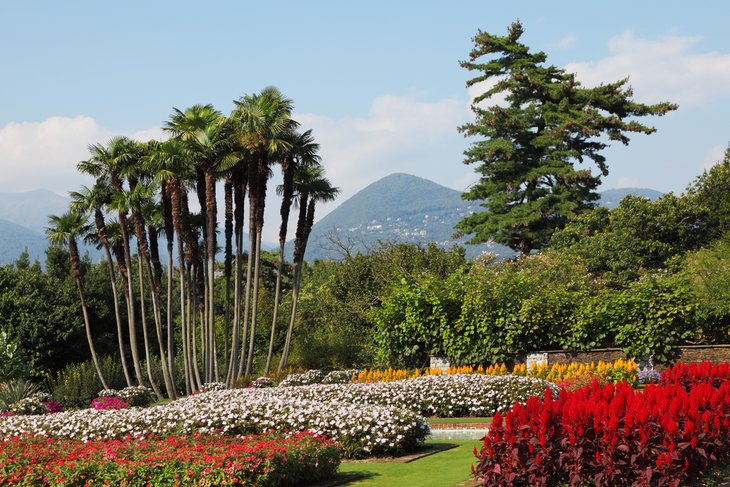
You could easily mistake the formal beds of massed flowers, manicured lawns, and shaded woodland paths of Villa Taranto for an English garden park-and rightly. It was designed by a retired Scottish army officer in the late 1940s, a botanist who found this microclimate on the western shore of Lake Maggiore to be perfect for growing plants from around the world.
You'll find plants indigenous to northern Italy, but also species from Amazon rain forests and other exotic environments. In the landscape-style gardens and park are more than 20,000 varieties of flowers, trees, shrubs, and water plants. The dahlia collection alone numbers more than 300 kinds.
Address: Via Vittorio Veneto, Verbania
Official site: https://www.villataranto.it/en/
Giardino Giusti, Verona
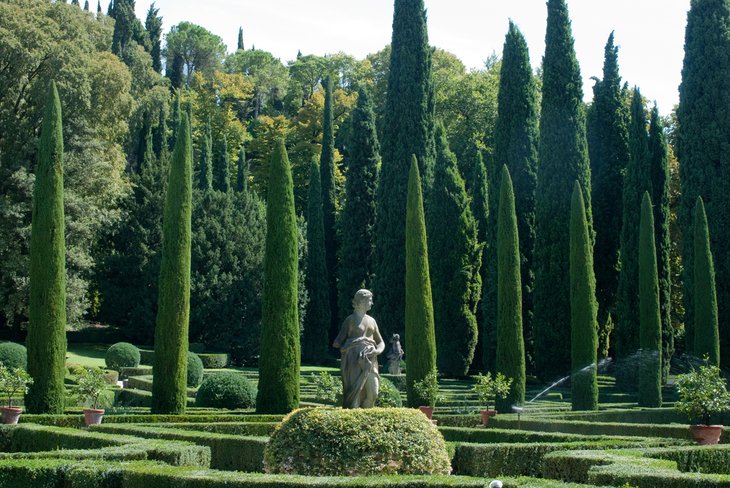
One of the finest examples of an Italian Renaissance villa garden lies behind the Verona villa of Venetian diplomat Agostino Giusti. He commissioned the garden in 1570, and it is unusual in several ways.
First, it is relatively small, and second, instead of leading upwards as a setting for the villa, it rises steeply above the villa, to reveal one of the finest views across the city over the villa's rooftop.
It is beautifully designed for an in-town residence, its formal parterres, hedge maze, and winding walks designed for strolling and as a shaded respite from Verona's summer heat. Its wilder section is reached by narrow paths enclosed by shrubbery and trees as they climb steeply to a grotto and terrace.
Address: Via Giardino Giusti 2, Verona
- Read More: Tourist Attractions in Verona
Parco Giardino Sigurtà
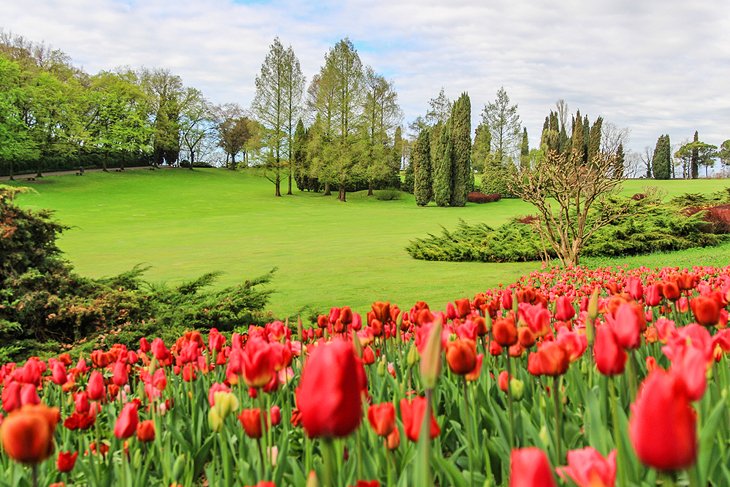
Spreading across 600,000 square meters (more than 120 acres) along the banks of the Mincio river, about 24 kilometers from Verona, Sigurtà is a garden park with 13 different sections. Each has its own parking area, so you can either explore the entire complex on foot or drive between sections.
Crowning a hilltop above the park, the towers of a ruined castle are framed by the garden's promenades and landscapes. From the brilliant flower beds and manicured lawns to the herb garden and 18 ornamental ponds and lakes, Sigurtà includes nearly every feature found in an Italian garden, but often with a twist.
There is the expected maze and a grotto, but the box trees and shrubs are not carved into the traditional shapes found in the usual topiary garden. Instead, they have been gently trimmed, but allowed to create their own curious and often fantastic shapes. The garden is perhaps best known for its display of tulips in the spring, when one million plants burst into bloom. But subsequent seasons bring profusions of irises, roses, lilies, and asters in turn.
Address: Valeggio sul Mincio
Official site: http://www.sigurta.it/
Frascati Villas near Rome
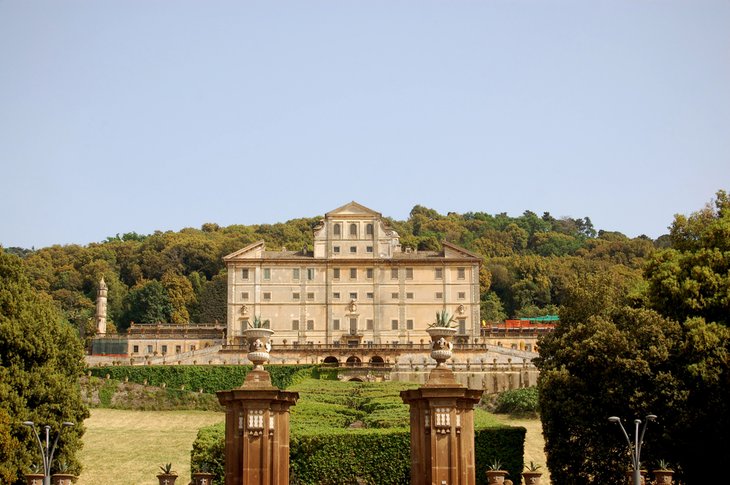
Noble Roman families of the 16th and 17th centuries built magnificent summer villas, palaces really, in the nearby Alban Hills. Frascati was the most popular, and a number of these villas still stand, surrounded by outstanding gardens and parks. Each of these gardens is different, and you can visit several of them.
Along with the gardens of Villa Torlonia is the elegant terraced park of Villa Aldobrandini with grottoes, fountains, and cascades overlooking views of the Alban Hills. Its focal point is Teatro delle Acque (water theater), a fountain whose stairs curve from terrace to terrace around cascades.
You'll find another Teatro delle Acque in the park surrounding Villa Falconieri, just outside of the town, this one with grottoes and statuary.
La Mortella, Ischia
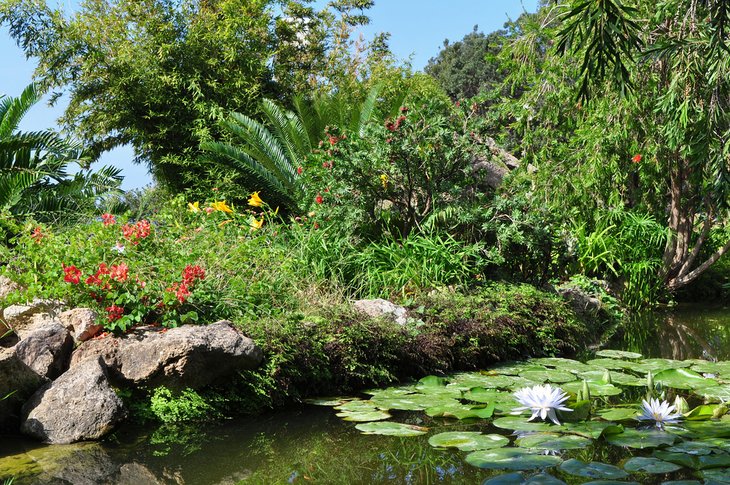
The unique environment of an island riddled with thermal springs inspired the wife of British composer William Walton to create a tropical garden surrounding their home on the island of Ischia, in the Bay of Naples. This natural warmth creates a natural heating system to protect the roots of plants that would normally not flourish here.
In 1946, Lady Susana Walton engaged British landscape designer Russell Page to create the gardens, which now contain more than 800 rare plants native to four continents. But more than a botanic garden, la Mortella is a peaceful oasis dedicated to beauty and a setting for the arts, including sculpture and music.
The most recent addition is a Greek theater, where an entire symphony orchestra can perform in lush tropical surroundings.
Address: Via Francesco Calise 39, Ischia
Official site: http://www.lamortella.org/en
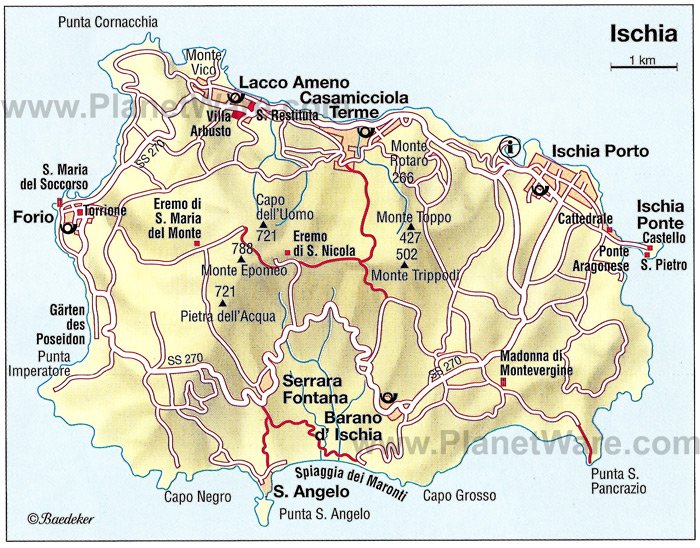
Valsanzibio Gardens
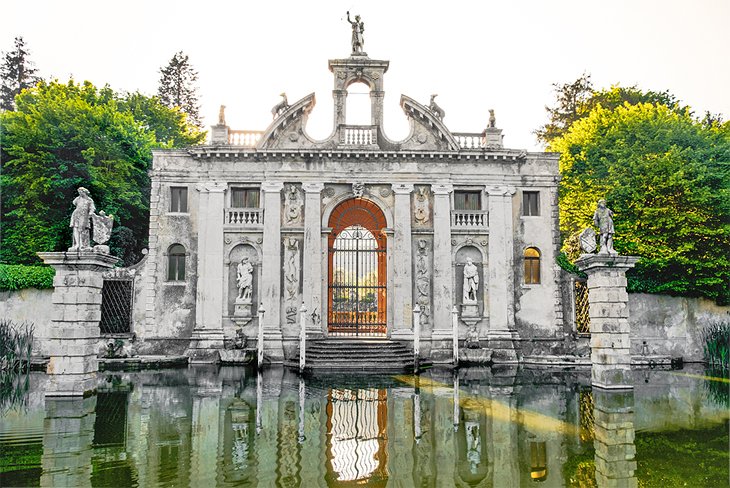
Architect Luigi Bernini, younger brother of the famed Baroque sculptor and architect Gian Lorenzo Bernini, designed the gardens at Villa Barbarigo at Valsanzibio between 1665 and 1696. The country villa, south of Padua, was built for the wealthy and powerful Venetian Barbarigo family in thanksgiving for the family's deliverance from the plague of 1630. Its design and features, therefore, have a spiritual message, that of a journey through life marked by difficulties that can be overcome.
So the trick fountains and hedge labyrinth for which the gardens are famous are not just little follies to surprise and delight guests, but allegorical difficulties to make visitors stop and meditate before they continue on. Central to the garden's theme is the harmony between beauty in the natural world and art created by humans. The main entrance, the monumental Diana's Pavilion, marks the beginning of the journey to salvation.
The labyrinth, dating from the 1660s and one of the world's oldest plant labyrinths, is formed from 6,000 boxwood plants, most of them more than 400 years old. Some of the boxwood hedges that line the boulevards at Valsanzibio Gardens soar to more than six meters high. One of these, the Venetian Alley, is designed to replicate the feel of the narrow alleys in Venice, is 500 meters long, and only 1.5 meters wide.
Trees in the garden were brought from Asia, America, Africa, and elsewhere in Europe, and some are as old as 900 years. The oldest California Cedar tree in Europe traveled by sea for several months from California, kept alive on the long voyage by precious fresh water. Of the 800 plants and trees, representing more than 100 species, nearly three quarters are original to the garden's creation in the 1600s.
Statues and fountains abound throughout Valsanzibio. A number of trick fountains keep a visit to the gardens exciting, and combined with the hedge maze make it appealing to children.
Address: Via Diana 2, Valsanzibio di Galzignano Terme
Official site: https://valsanzibiogiardino.com
Villa Rufolo
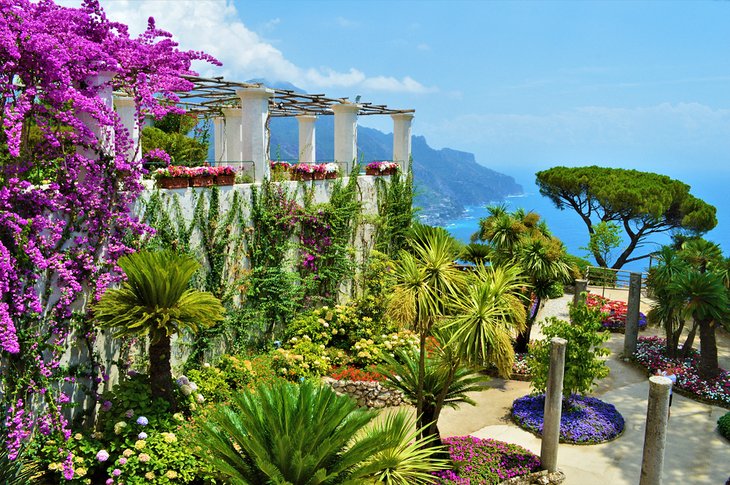
High above the Amalfi Drive, the town of Ravello seems suspended in midair over the sea. Nowhere is this impression stronger than in the cascading gardens of Villa Rufolo. The villa itself took form in the 13th century at the height of the Amalfi Maritime Republic, when Nicola Rufolo built a grand manor house in the Islamic-Norman style.
An avenue lined by cypress and lime trees leads to the neo-Moorish cloister, added in the 1800s when the grounds were transformed into a romantic garden. The villa had fallen to partial ruin when it was bought by the Scottish botanist and art expert, Francis Nevile Reid.
It was under his guidance that the ruins of the medieval palace were incorporated into the upper garden, where flower beds undulate among the stone columns, architectural fragments, statues, and exotic trees. Reid continually added new plants, replaced previous ones and experimented with transplanting and grafting exotic species.
Steps continue downward, alongside stone walls clad in bright bougainvillea. This garden looks out onto a mosaic of formal flower beds, spread along a terrace that in turn overlooks the sea and a distant headland. Below the garden terrace the view is framed by an umbrella pine and the domed twin towers of the Church of the Annunziata.
In contrast to the shaded romantic and atmospheric gardens above, the sun-drenched terrace is brilliant, with a mosaic of continuously blooming flowers – geometrically shaped parterres of blue and yellow pansies, red and pink begonia.
Reid solved the problem of watering these gardens by building an aqueduct that brought a water supply to the entire village. You can still drink from the fountain in front of the church. From June through September, the Ravello Festival is held in the gardens, with the orchestra dramatically poised above the sea on a platform extending from the terrace.
Address: Piazza Duomo, Ravello
Official site: http://www.villarufolo.it
Isola Bella and Isola Madre, Lake Maggiore
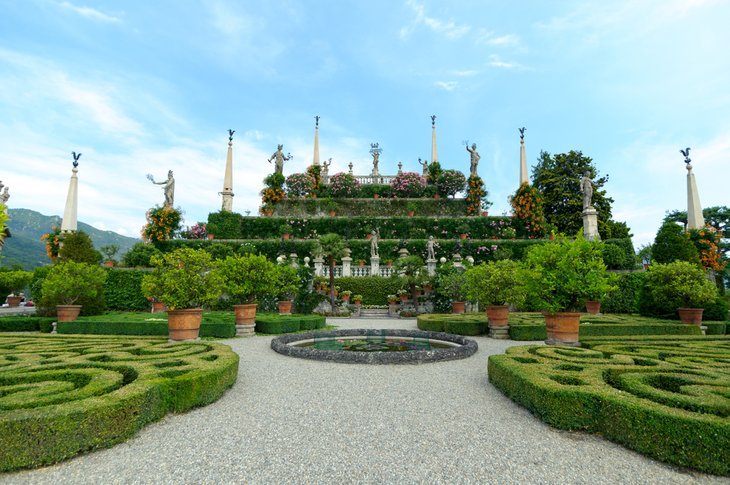
Every inch of Isola Bella that is not covered by the grandiose 17th-century palace of Count Vitaliano Borromeo is devoted to his equally bombastic gardens. They are the epitome (some might say caricature) of Italianate gardens.
To create more space on the relatively small island in Lake Maggiore, a series of 10 terraces were constructed to a height of 32 meters, climbed by wide stone stairways. The terraces are completely covered in flamboyant flower beds, tall cedars, rows of lemon and orange trees, camellias, magnolias, oleanders, and other trees, interspersed by statues.
The only place for the eye to rest is on the beautiful lake and mountain views the gardens frame. Both the palace and the garden are fun to visit, and still owned by the Borromeo family.
For a more restful garden experience, take the boat on to Isola Madre, where a modest villa sits in an English-style green park of rolling lawns and tall trees. A shady path circles the shore; the gardens are lush and restful, a good counterpoint to Isola Bella. They are especially beautiful in the spring and early summer, abloom with azaleas, rhododendrons, and camellias.
Address: Isola Bella, Lake Maggiore
Villa Serbelloni, Bellagio
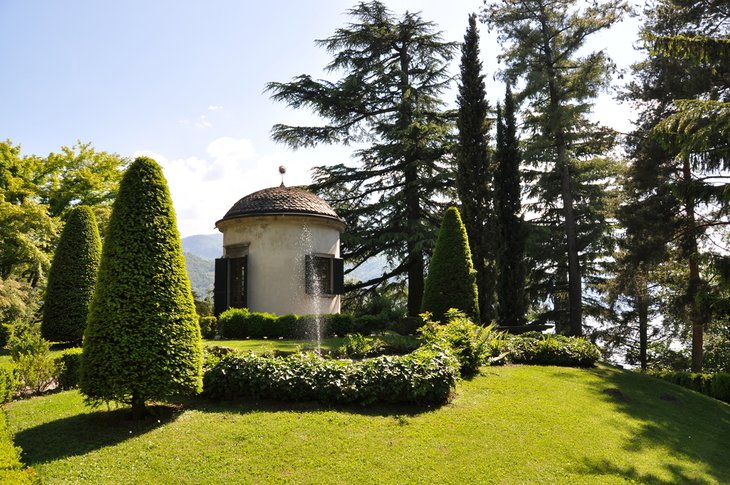
The setting, high above the town on a point of land surrounded by Lake Como on three sides, couldn't have provided a better backdrop for gardens. The 19th-century Italianate style of landscaping takes advantage of every angle to frame the lake and mountain views.
The rose gardens, for which Villa Serbelloni is the most famous, are bordered by boxwood hedges. You can only visit the gardens on tours, which you can reserve in the PromoBellagio office in Piazza San Giacomo, below in Bellagio.
While in the village, stroll along the lakeshore through the manicured gardens of Villa Melzi d'Eril. Designed in the early 19th century, the gardens are open and uncluttered, with occasional statues, a lakeside gazebo, a Moorish-style pavilion, and a water garden.
Address: Piazza della Chiesa 14, Bellagio
More Related Articles on PlanetWare.com
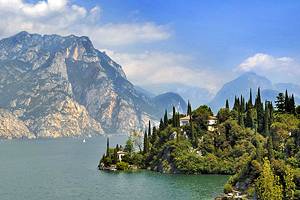
More to See in Italy: While you're touring gardens, you'll want to see more of the nearby sights, especially around the lakes; our pages on visiting Lake Como and Lake Maggiore can help you find these. There are more beautiful gardens to visit around Lake Garda. If you haven't yet figured out your routing, read through our Italy itineraries for ideas.




